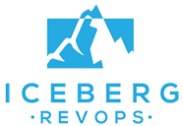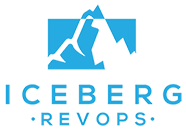HubSpot CRM can be an excellent choice for companies looking to scale but wondering if it’s too soon for Salesforce.
Growing companies on the hunt for a new Customer Relationship Management (CRM) system frequently default to Salesforce.
As of March 2021, Salesforce had nearly 20% market share, more than its top four competitors combined. The world’s most successful companies use Salesforce, and its AppExchange marketplace makes add-ons and customization virtually limitless.
But, not every organization needs Salesforce.
In fact, letting Salesforce win by default can set a company back tens of thousands of dollars in operational debt—also known as a no man’s land of misused technology caused by not having the right expertise to configure a large CRM.
HubSpot CRM’s functionality and flexibility offer another choice for scaling companies that don’t need Salesforce right now. HubSpot’s customer base grew by more than 34% last year as increasing numbers of mid-market SMBs jump on board, and as we’ll discuss below, even enterprise organizations can lean into HubSpot depending on the complexity of their sales process.
You’ll find fantastic articles Salesforce vs HubSpot and Which is right for you comparing HubSpot to Salesforce.
In this blog, we’re focusing exclusively on the most critical inflection points in your revenue operations that impact success with HubSpot.
Quick tour
1. Outbound marketing with HubSpot
2. HubSpot for enterprise
3. Reporting in HubSpot
4. When it’s time to make the switch from HubSpot
1. Outbound marketing with HubSpot
HubSpot’s founders initially designed the platform as an inbound marketing platform back in the mid-2000s when cold outreach fell out of favor. The focus turned to nurturing relationships with potential customers who’ve already indicated their interest in a solution.
Influenced by its origins, HubSpot CRM’s native functionality only creates a contact based on leads who’ve downloaded or engaged with content. Other CRMs not so inbound-focused let you create contacts ad hoc. For outbound, this ad hoc functionality gives BDRs the ability to track and nurture prospects before they touch your content and become an actual lead (depending on how your organization defines its prospect lifecycle stages.)
It’s difficult for sales and marketing to work together on outbound prospecting in HubSpot because the HubSpot automation suite (free or paid) doesn’t allow you to trigger automations based on common sales activities (namely adding a prospect to an email sequence or calling them). This cuts off marketing from supporting outbound sellers in an automated fashion.
For example, you can’t write a workflow that says whenever an outbound sales rep adds a new prospect to their prospecting sequence, enroll them in a prospect drip marketing flow so that they receive additional information (air cover) from the marketing team for the next three months.
Workarounds for outbound in HubSpot
That said, there are ways organizations with minimal outbound can get by. One of the most common issues outbound prospecting teams face is tracking their outbound efforts. Just tracking how many prospects (and companies) you have approached can be difficult.
Here’s a hack that Iceberg uses for teams that need to do limited outbound using HubSpot:
Add an “Outbound Initiated” checkbox on the Contact record that a rep can set to TRUE when they begin reaching out to a prospect. They must do this every time they being approaching a prospect — otherwise, your data won’t be complete. We suggest tracking this closely by building a report; maybe even add it as an input to an outbound rep’s commission calculation.
The checkbox should be tied to an automation that does a few things:
- Stamps a “Last Outbound Date” field with today’s date
- Sets the associated Company’s status to Approaching (or something similar)
- Unchecks the Outbound Initiated box after x days; however long you want the rep to wait before reaching out again if they don’t generate a deal
2. HubSpot for enterprise
One of the stickiest misconceptions about HubSpot CRM is that it’s only suited for small businesses. In reality, HubSpot can be an excellent choice for enterprise organizations. In fact, it can be the ideal choice for organizations already saddled by complicated technology across every other division of their business.
According to Taft Love, Co-Founder of Iceberg RevOps, “HubSpot is used by teams of all sizes. This includes one-person startups all the way up to large (1k+ employee) companies. But, the products they use differ. As a company grows, they are less and less likely to use sales and support features because there are other best-of-breed products. For example, there are plenty of 1-25 person companies that use the full HubSpot suite (sales, marketing, support) while most 100+ person companies use only marketing tools.”
HubSpot works for enterprise organizations that have a straightforward sales process without the need for heavy customization, a minimal outbound sales motion, and low concern about human error, e.g. in complex quoting.
HubSpot for enterprise delivers a platform with flexibility many larger organizations aren’t used to having. Because it’s so easy to use, onboarding is essentially nill while Salesforce requires sales rep training and ongoing technical support.
3. Reporting in HubSpot
The HubSpot product suite includes HubSpot CRM, Sales Hub, and Marketing Hub as separate entities with their own reporting. HubSpot’s Free CRM limits data to lead, company, and task dashboards. This makes actions that are easy to do in other CRMs like segmenting reports based on team members challenging, at least until you get to the enterprise level. Even then, the separation of sales and marketing into distinct hubs severs big-picture insights compared to more mature platforms like Salesforce with a CRM core that allows for custom objects and filters.
However, similar to Salesforce’s AppExchange, HubSpot’s App Marketplace gives HubSpot users the ability to tap into deeper reporting functionality. You can customize a reporting solution in HubSpot for far less effort and cost than trying to grow into Salesforce before you’re organization is ready.
On the subject of integrations, HubSpot does an excellent job of integrating tools (beyond CRM and marketing automation) that you would otherwise have to buy and integrate manually. While it’s rarely a good fit for a large business with complex needs, it’s often perfect for small and growing businesses.
A few types of software that you can simply turn on, instead of having to buy, integrate, and manage:
- Forms
- Landing pages with A/B testing
- Chatbot
- Customer support ticket system
- Quote/proposal tool
- E-signature tool
4. When to make the switch from HubSpot
As companies start to wonder if they need a more robust system, they hear over and over again, “Time for Salesforce.” A healthy distrust of that mantra is growing, and rightfully so.
While the jump may be inevitable in many cases, growing your sales team doesn’t automatically require switching Salesforce.
The switch to Salesforce should only happen with certainty if you need one of the following:
- Robust reporting, including custom report types and the ability to build complex filters and summaries within reports
- More structure around your sales process, including validation rules and in-app guidance for reps to understand how deals should be recorded within the CRM
- To integrate best-of-breed tools like email marketing tool Outreach.io into your workflow, since some tools don’t integrate (well) with HubSpot
HubSpot is a great choice for the right business
The switch to Salesforce isn’t automatic anymore. Small(er) but mighty CRMs like HubSpot provide huge cost savings in implementation, training, and development for organizations (small business to enterprise) that have sales processes without the need for a ton of customization. Reporting and outbound marketing are its biggest sticking points right now, but both areas offer solutions worth exploring. HubSpot is certainly the more nimble choice, and the HubSpot App Marketplace offers a huge selection of tools businesses can integrate to close functionality gaps.
Iceberg can help
If you’re looking for a strategic partner to help implement HubSpot or want a no-strings roadmapping session that gives you a prioritized plan for scaling your operations, contact Iceberg today.


